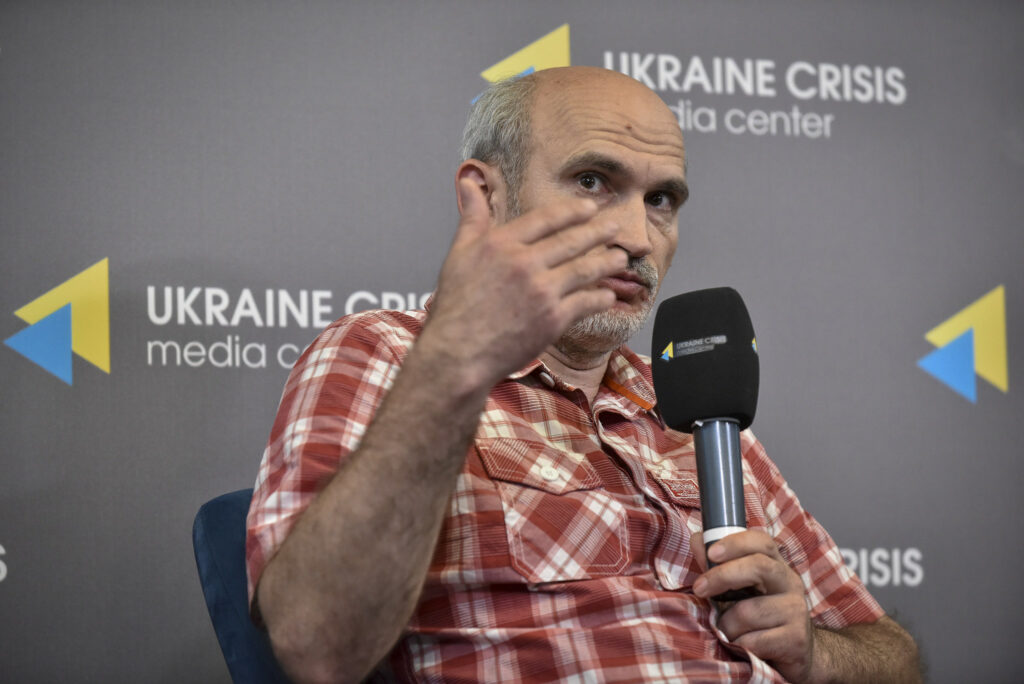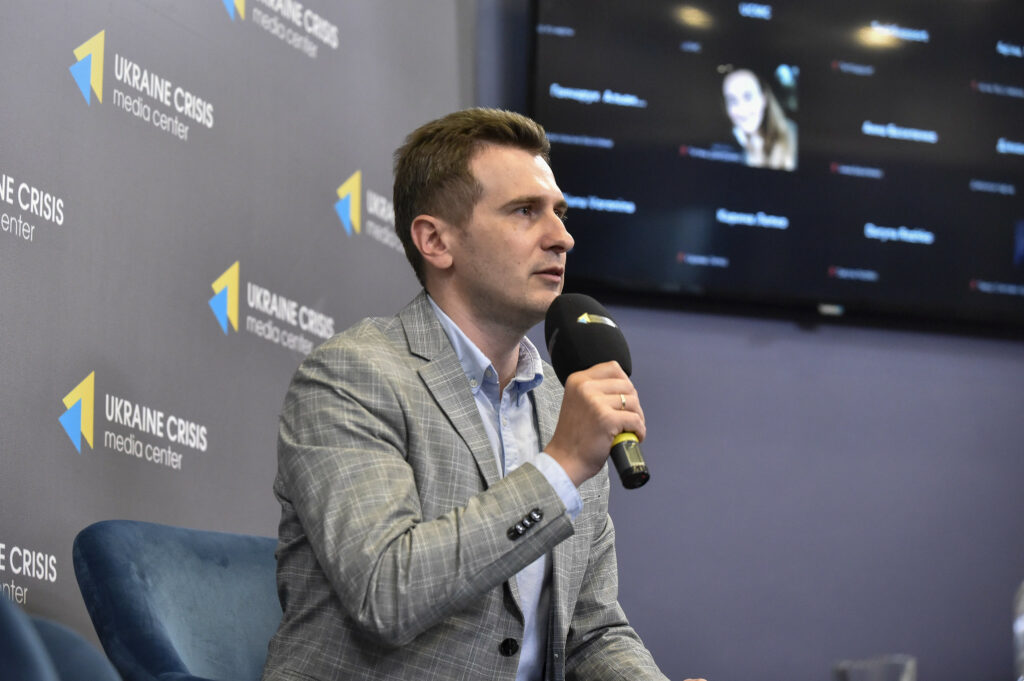Ukraine Crisis Media Center presented its research “Pro-Moscow Myths of the Southern and Eastern Regions of Ukraine.” This time, the project coordinator, candidate of historical sciences Ihor Stambol, focused on five regions where these narratives were quite common before the full-scale invasion started.
In almost all cases, the Russians said that they were directly involved in the founding of regional centers. How do Ukrainian historians and archival materials respond to this?
“Odesa, unlike many other cities in the south and east, was lucky with the first written mention, which dates back to 1415. The only problem for local historians is the filling of that period between the Grand Duchy of Lithuania and the Russian Empire. This Kotsiubiyiv is later transformed into Khadzhybey. In fact, there was an existing city, and if we talk about the role of the Russians, of course, they renamed it later. But there is a difference between founding and renaming. It is interesting that Muscovites themselves did not immediately cling to this concept of foundation. They also talked about joining and there is a well-known postcard stating that 1894 is the anniversary of Odesa joining Russia,” the host noted.
There is another pro-Russian myth closely related to Odesa. It is about Odesa’s special attitude to Alexander Pushkin. As noted by Kherson regional historian and museum specialist Serhiy Diachenko, the personality of this poet has long been a symbol of the “Russian world”. Monuments to him are erected where they should and shouldn’t be. This is how they mark the territory of the “Russian world”.
“But there are certain reservations about Odesa,” he noted. “Things happened a little differently in history. Pushkin did not show this Odesa very well in his “Eugene Onegin”, however, he showed it as it really was at that time. The way it was seen by people who visited Odesa, and most of those who lived there were foreigners. He even said that Odesa is a “non-Russian city and Russian books aren’t read here.”
As for Kherson, Russian mythology claims that this city was founded by Catherine II, built by Potemkin, and before him it was a bare field. However, facts say otherwise.
“This is a vivid example of a palanka arrangement (Note – palanka is a fortified settlement with a small Cossack garrison). The Cossacks ran the settlement and all the economic matters. And although it is clear that at that time it was already done under the Muscovites’ rule, it was a Ukrainian Cossack initiative. Somewhere around modern Kherson was a town called Perevizka. It is worth mentioning the Black Sea Cossack flotilla under the leadership of Sydir Bilyi, which was the only combat-ready unit of the Russian fleet that participated in the confrontation with the Turks. It was also created in Kherson,” Ihor Stambol noted.
According to Serhiy Diachenko, historically, the southern region is like a layer cake. Ottoman, Genoese, Lithuanian, Polovtsian, Scythian periods and so on. All these periods have been wiped out, there’s not a single record. But all these nations, starting with ancient Greece and the first colonies, formed the Ukrainian nation. “We must not give up this heritage,” the historian concluded.
There were also Cossack winter camps on the territory of the modern Dnipro. Regarding the development of industry, here, as well as in Zaporizhzhia, a significant part of enterprises existed in the pre-Soviet period, and this completely contradicts the statement that it was the USSR that brought industrialization.
“The Dnipro is a very clearly indication of who and how really created industry there. This is a whole series of factories that were later given different names. One of them was given the name Comintern, but it is a former Belgian factory that was built to some extent against the spirit and desire of the empire,” Ihor Stambol gave an example.
The key pro-Russian myth associated with the Luhansk region says that the Don Cossacks played a major role in the development of this region. It is not difficult to refute this statement. This territory was originally inhabited mainly by Sloboda and Zaporizhzhian Cossacks, but being loyal to the Russian authorities and enjoying its support, the Don Cossacks sometimes occupied settlements previously founded by Ukrainian settlers. Moreover, the Don Cossacks often borrowed technologies brought by Ukrainian settlers from central Ukraine.
“As for the common saying that Kharkiv is the first capital, it is another attempt to distort history. First of all, Kyiv has been Ukraine’s long-standing center since the time of Rus, and Kharkiv is by no means such a spiritual center. Kyiv has always been the first capital for Ukrainians, no matter what political conditions made the capital move. Why did Kharkiv become the first capital in 1918? Because it was the first to be captured by the Bolsheviks. Accordingly, the city they captured became the capital,” the project coordinator explained.
There is also another statement that does not allow us to talk about all other cities as capitals, he added. During the time of the Ukrainian People’s Republic, when the government retreated, parallel to the fact that Kharkiv became the capital of the Ukrainian “Soviet” republic, the Ukrainian People’s Republic – the one that was democratic – had several capitals, in particular in Vinnytsia, Kamianets-Podilsky, Khmelnytsky, which was Proskuriv.
In addition, in terms of demographics, Kharkiv could not be considered a Russian-speaking city. As early as 1897, the population census showed that 80% of the city’s population recognized themselves as Ukrainians or Little Russians.
“Myths are those white threads with which Muscovites try to sew parts of Ukraine to themselves, and very often it is all very fictional, ungrounded, but it takes root through repetition, mass consciousness, and sometimes ignorance of elementary facts. This research is aimed precisely against these myths. This work must be periodically repeated, certain facts must be re-checked in order to get rid of all these harmful narratives,” concluded Ihor Stambol.
The event took place as part of the project “Strengthening Information Resilience in Ukraine” in partnership with the International Practitioners’ Partnership Network (Estonia) with the support of the European Union.




